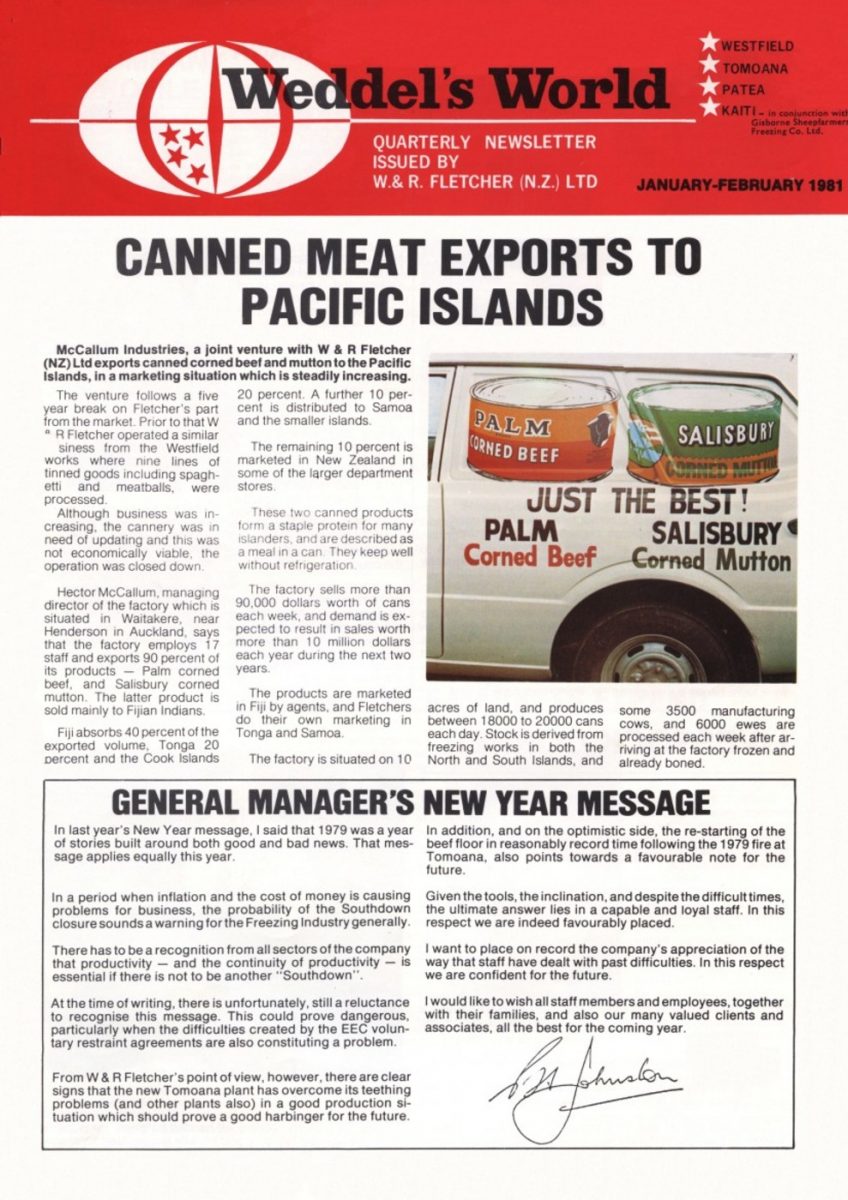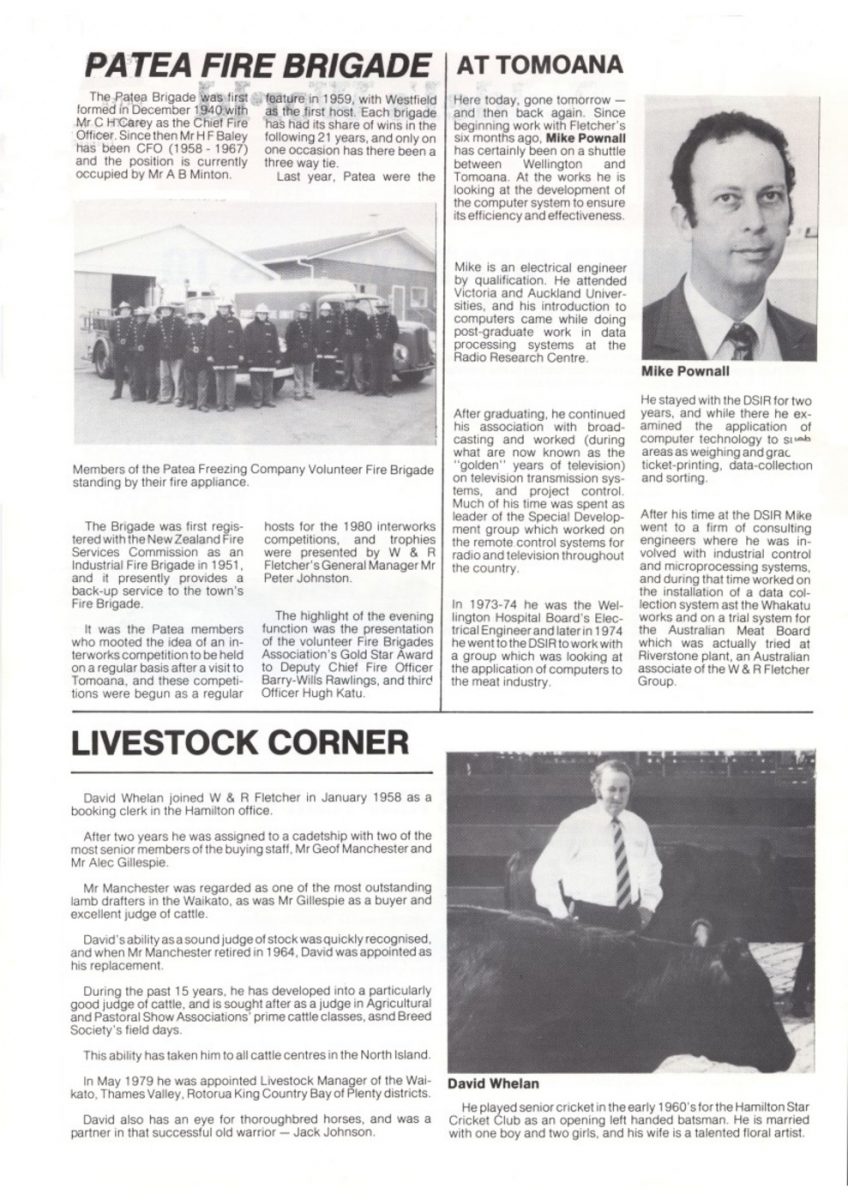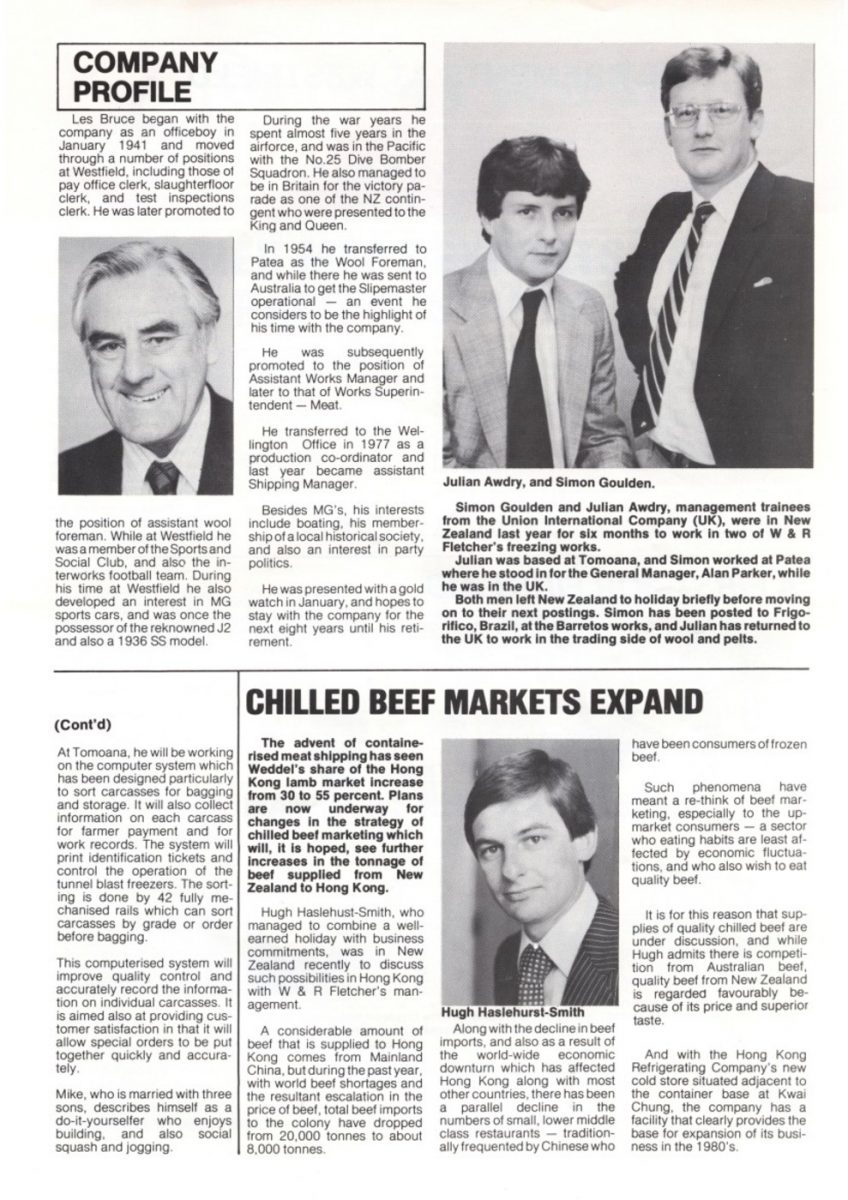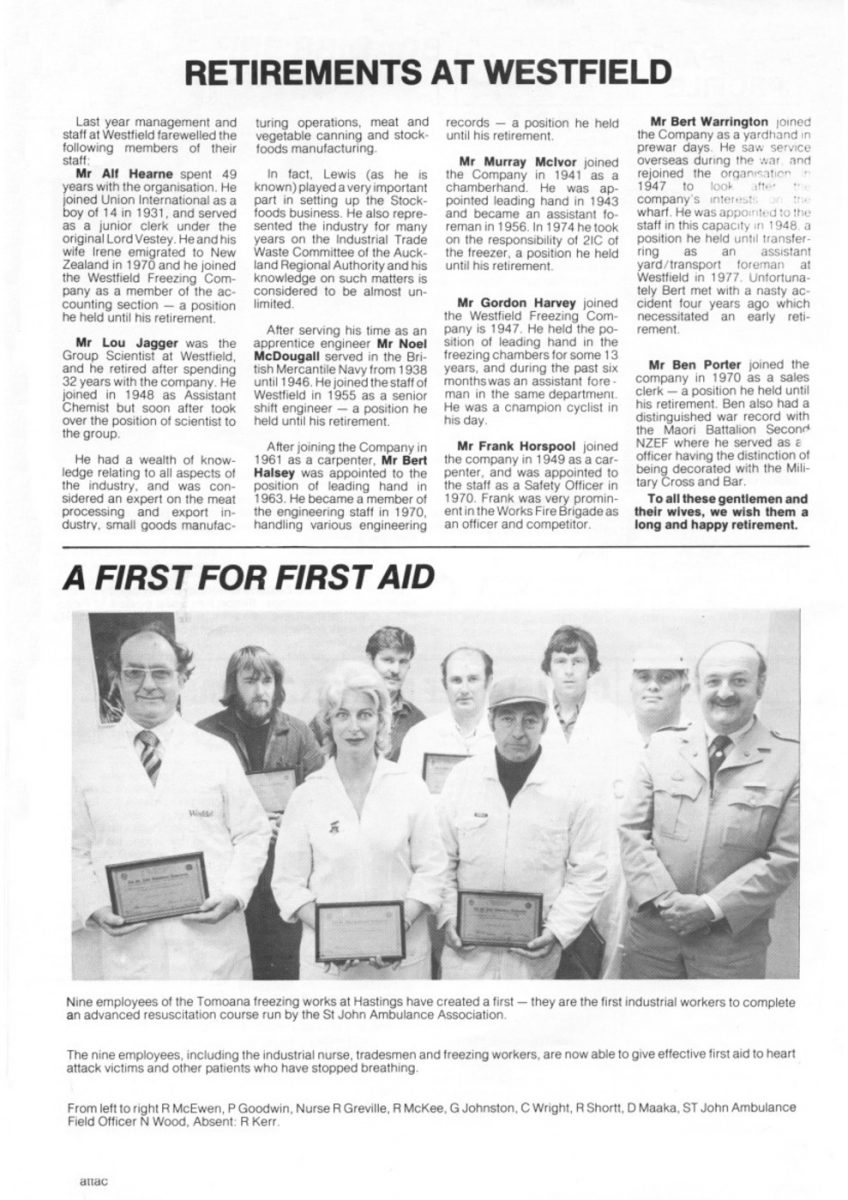COMPANY PROFILE
Les Bruce began with the company as an office boy in January 1941 and moved through a number of positions at Westfield, including those of pay office clerk, slaughterfloor clerk, and test inspections clerk. He was later promoted to the position of assistant wool foreman. While at Westfield he was a member of the Sports and Social Club, and also the interworks football team. During his time at Westfield he also developed an interest in MG sports cars, and was once the possessor of the reknowned J2 and also a 1936 SS model.
During the war years he spent almost five years in the airforce, and was in the Pacific with the No.25 Dive Bomber Squadron. He also managed to be in Britain for the victory parade as one of the NZ contingent who were presented to the King and Queen.
In 1954 he transferred to Patea as the Wool Foreman, and while there he was sent to Australia to get the Slipemaster operational – an event he considers to be the highlight of his time with the company.
He was subsequently promoted to the position of Assistant Works Manager and later to that of Works Superintendent – Meat.
He transferred to the Wellington Office in 1977 as a production co-ordinator and last year became assistant Shipping Manager.
Besides MG’s, his interests include boating, his membership of a local historical society, and also an interest in party politics.
He was presented with a gold watch in January, and hopes to stay with the company for the next eight years until his retirement.
Photo caption – Julian Awdry, and Simon Goulden.
Simon Goulden and Julian Awdry, management trainees from the Union International Company (UK), were in New Zealand last year for six months to work in two of W & R Fletcher’s freezing works.
Julian was based at Tomoana, and Simon worked at Patea where he stood in for the General Manager, Alan Parker, while he was in the UK.
Both men left New Zealand to holiday briefly before moving on to their next postings. Simon has been posted to Frigorifico, Brazil, at the Barretos works, and Julian has returned to the UK to work in the trading side of wool and pelts.
(Cont’d)
At Tomoana, he will be working on the computer system which has been designed particularly to sort carcasses for bagging and storage. It will also collect information on each carcass for farmer payment and for work records. The system will print identification tickets and control the operation of the tunnel blast freezers. The sorting is done by 42 fully mechanised rails which can sort carcasses by grade or order before bagging.
This computerised system will improve quality control and accurately record the information on individual carcasses. It is aimed also at providing customer satisfaction in that it will allow special orders to be put together quickly and accurately.
Mike, who is married with three sons, describes himself as a do-it-yourselfer who enjoys building, and also social squash and jogging.
CHILLED BEEF MARKETS EXPAND
The advent of containerised meat shipping has seen Weddel’s share of the Hong Kong lamb market increase from 30 to 55 percent. Plans are now underway for changes in the strategy of chilled beef marketing which will, it is hoped, see further increases in the tonnage of beef supplied from New Zealand to Hong Kong.
Hugh Haslehust-Smith, [Haslehurst] who managed to combine a well-earned holiday with business commitments, was in New Zealand recently to discuss such possibilities in Hong Kong with W & R Fletcher’s management.
A considerable amount of beef that is supplied to Hong Kong comes from Mainland China, but during the past year, with world beef shortages and the resultant escalation in the price of beef, total beef imports to the colony have dropped from 20,000 tonnes to about 8,000 tonnes.
Along with the decline in beef imports, and also as a result of the world-wide economic downturn which has affected Hong Kong along with most other countries, there has been a parallel decline in the numbers of small, lower middle class restaurants – traditionally frequented by Chinese who have been consumers of frozen beef.
Such phenomena have meant a re-think of beef marketing, especially to the upmarket consumers – a sector who eating habits are least affected by economic fluctuations, and who also wish to eat quality beef.
It is for this reason that supplies of quality chilled beef are under discussion, and while Hugh admits there is competition from Australian beef, quality beef from New Zealand is regarded favourably because of its price and superior taste.
And with the Hong Kong Refrigerating Company’s new cold store situated adjacent to the container base at Kwai Chung, the company has a facility that clearly provides the base for expansion of its business in the 1980’s.
Photo caption – Hugh Haslehurst-Smith















Do you know something about this record?
Please note we cannot verify the accuracy of any information posted by the community.